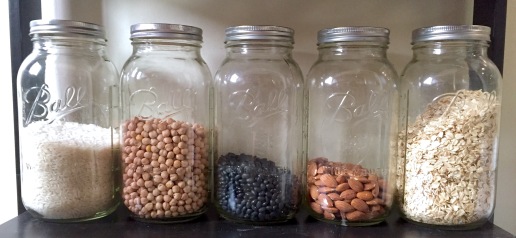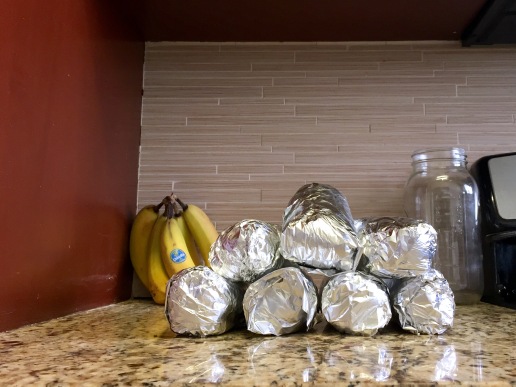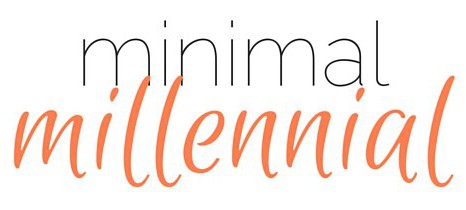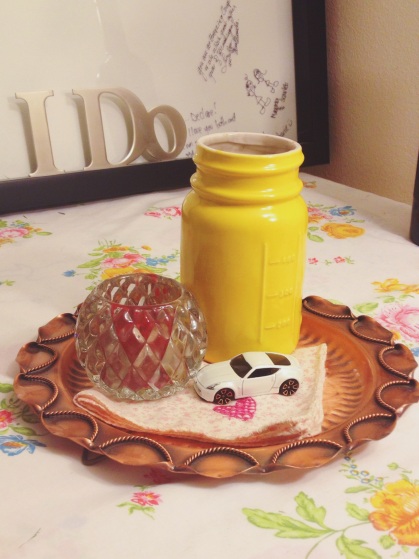I’m going to be honest: I forgot to save my receipts and track exactly what I got this past week.
But I do know that I made it in around the $70 mark! I’ve got next week’s receipt sitting beside me as I type this, and I’m going to keep track this time for sure.
Before I dive into specifics (as best as I can), I can tell you one very important thing we’ve learned so far: staying stocked on the essentials is, well, essential.
Staying stocked up and a confession
Our existing stock has helped us get further into this month than I had anticipated, but it’s starting to run out. Specifically flour, oats, honey, peanut butter and jalapeno sauce (you may laugh, but we usually have a few bottles on hand since we use it all the time).
Staying stocked up may sound counter-intuitive to a minimalist lifestyle, but I learned a practical tip from an old friend: use your dry ingredients as decorations.
Decorate your kitchen, your bookshelves, the top of your cupboards – anywhere you want – with ball jars of dry ingredients. It looks lovely, saves on decor costs, and you always have things like flour, oats, and beans on hand.

Now for the confession: for the purpose of this experiment, I’ve been taking the cost of most stock-up supplies out of my weekly calculations. Since we have been using tons of rice and beans, those are all included in my calculations.
I’d estimate it adds up to an extra $20 or so each month for things that will stretch past one or two meals – flour, peanut butter, honey, sauces, tea. But when I need these things, I try to get bulk or sale as much as I can.
Our grocery list for week two
So here’s what we got! Remember, this is a rough estimate (especially when it comes to bulk items). I only know that we stayed around $70.
- 1 lb chickpeas
- 1 lb black beans
- 1 lb white rice (wanted brown, but it was out of stock)
- 2 bunches of kale (most of which went to the rabbits)
- 2 bags frozen corn
- 10 Roma tomatoes
- 1 lb jar of minced garlic
- 6 zucchini squashes
- 1 bunch green onions
- 4 bags frozen brussel sprouts
- 4 bags frozen cauliflower florets
- 5 lbs carrots
- 1 dozen eggs
- 2 bags frozen spinach
- 1 bunch bananas
- 24 oz honey
- 1 red bell pepper
- 3 lbs red onions
- 8 burrito-sized tortillas
- 16 oz shredded mozzarella
Looking at it now, that’s a ton of food! We save by getting frozen veggies, dry goods and very few processed foods. We had a hankering for bean burritos, hence the tortillas and cheese. I only get cheese once every couple of months or so, because it’s expensive, not highly nutritious and I also tend to eat it straight out of the bag until it’s gone.
Some of our favorite meals
I was able to do a lot with this haul. We drank smoothies every day, and I was able to make some amazing granola bars from the Minimalist Baker. They’re my absolute favorite, and I throw in any additional seeds or nuts I have available for an extra boost. If you don’t already love Minimalist Baker, I recommend them for simple, delicious recipe inspiration.
I made burritos with these restaurant-style black beans. I threw in rice, beans, frozen corn, red pepper, homemade salsa, mozzarella and some lettuce. I wrapped and kept them individually in foil so they stayed together when I reheated them as leftovers.

I tossed the rest of the homemade salsa (a random mix of onions, tomatoes, cilantro and jalapenos) into rice as a substitute for some of the liquid, cooked it up and topped it with a poached egg for another evening.
We also had this vegan black bean soup, which was ah-may-zing over rice and also over zucchini noodles.
Roasted chickpeas are an addictive snack if you’re looking for a cheap alternative to chips. You can even make a honey version for when that sweet tooth comes on strong. For the adventurous, save the water you cook your chickpeas in (which is actually called aquafaba) – you can make vegan chocolate mousse with it.
There you have it! Week two, in the bag. Look forward to our notes on week three sometime next weekend. Week three’s goal is $65, and we’ve already spent $53 in preparation. Wish us luck.


